Overview
This article highlights the critical wine tasting tools that significantly enhance customer engagement for wineries. It asserts that specialized glassware, preservation systems like Coravin, and aroma kits not only elevate the tasting experience but also cultivate customer loyalty. By creating memorable interactions, these tools enable consumers to appreciate the nuances of wine more profoundly. Wineries must recognize the value of investing in these essential tools to foster deeper connections with their clientele.
Introduction
The world of wine tasting transcends the mere enjoyment of the beverage; it represents an immersive experience that can be significantly enhanced with the right tools. As the beverage industry evolves, family-owned wineries are uncovering innovative methods to engage customers and elevate their tasting experiences. This article explores nine essential wine tasting tools that not only amplify the enjoyment of wine but also cultivate deeper connections between wineries and their patrons. How can these tools transform a simple tasting into a memorable event that encourages customers to return for more?
Enocap: Transformative DTC Strategies for Family-Owned Wineries
Enocap excels in crafting customized direct-to-consumer (DTC) strategies that empower family-owned wineries to forge meaningful connections with their customers. By concentrating on robust sales channel development, optimizing club memberships, and executing efficient demand generation techniques, Enocap has achieved remarkable results for its clients, including an impressive average e-commerce sales growth of 191%. These strategies not only drive immediate sales but also cultivate long-term customer loyalty through compelling brand narratives and personalized experiences.
Recent trends indicate a significant shift in the beverage industry, with approximately 70% of wineries anticipating sales growth exceeding 5% over the next five years. This optimism is reflected in the evolving DTC landscape, where wineries are increasingly leveraging to enhance their market presence. For instance, orders of four to six bottles now account for 25% of all shipments, showcasing a consumer preference for larger, consolidated purchases.
Industry leaders emphasize the importance of adapting to these trends. As highlighted by a senior vice president at Southern Glazer’s Wine & Spirits, there is a growing consumer desire to upgrade to premium selections, presenting a substantial opportunity for wineries to enhance their offerings. Furthermore, the average price of a bottle shipped directly to consumers has risen to $52.68, marking an 8% increase year-over-year, underscoring the potential for wineries to capitalize on premium pricing strategies.
By implementing these transformative DTC strategies and securing the right capital, Enocap not only drives immediate revenue growth but also positions family-owned wineries for sustainable success in a competitive market.
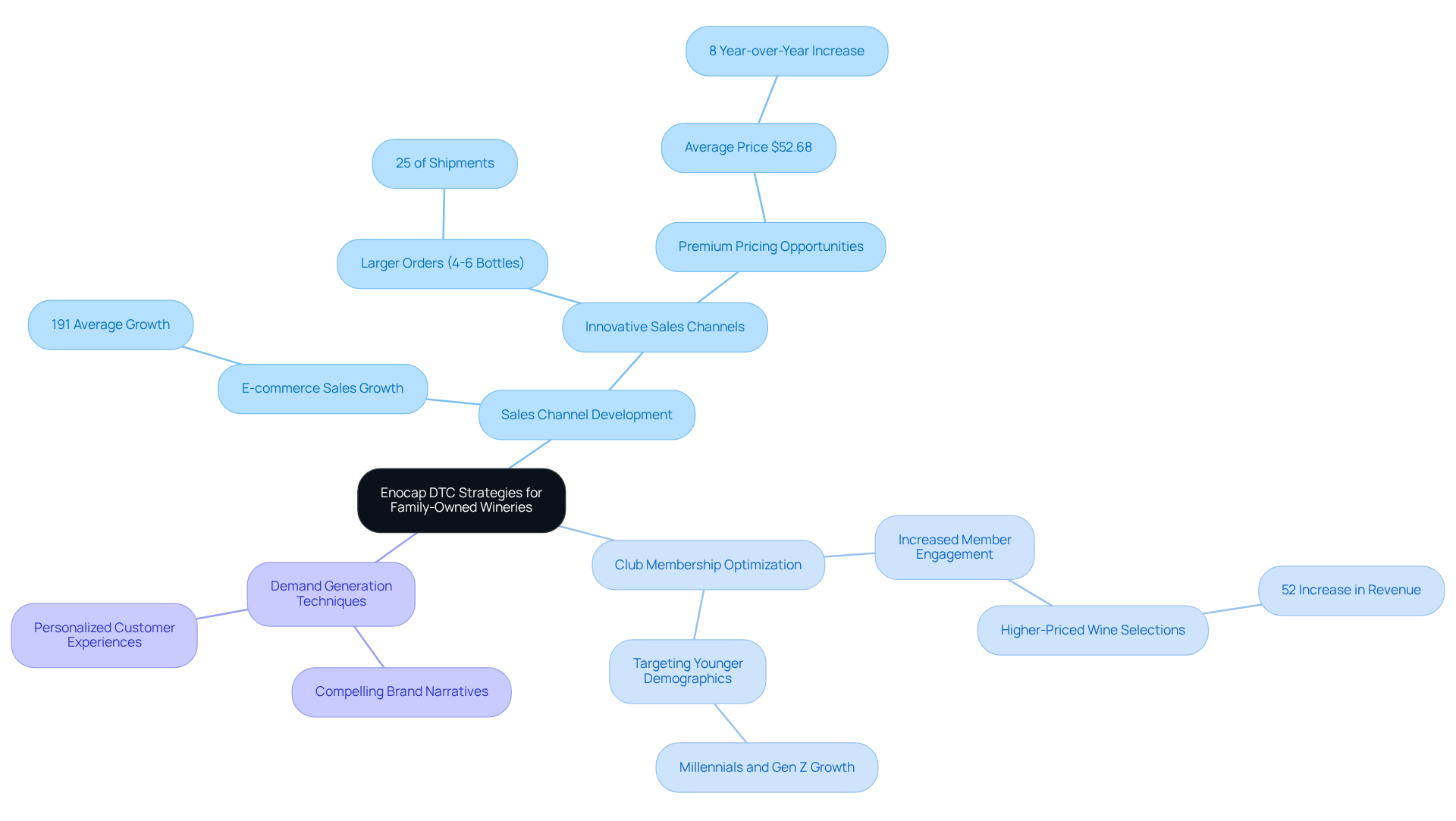
Riedel Veritas Pinot Noir/Burgundy Glasses: Elevate Your Tasting Experience
The Riedel Veritas Pinot Noir/Burgundy glasses are meticulously crafted to elevate the enjoyment of Pinot Noir by emphasizing its delicate aromas and flavors. Their elegant tulip shape promotes , a crucial factor for fully appreciating the beverage's complexities.
Premium glassware not only enhances consumer enjoyment but also signifies a winery's dedication to quality and artistry. As specialists emphasize, the right vessel is one of the crucial wine tasting tools that can significantly influence the perception of a beverage's hue, fragrances, and flavor, making it an indispensable component of any tasting event.
By investing in specialized glassware, wineries can create memorable experiences that resonate with customers, fostering stronger connections and loyalty.
Moreover, the INAO vessel, recognized for its versatility and cost-effectiveness, is one of the essential wine tasting tools suitable for all wine varieties and allows for precise observation of the liquid's clarity and colors, further enriching the tasting experience.
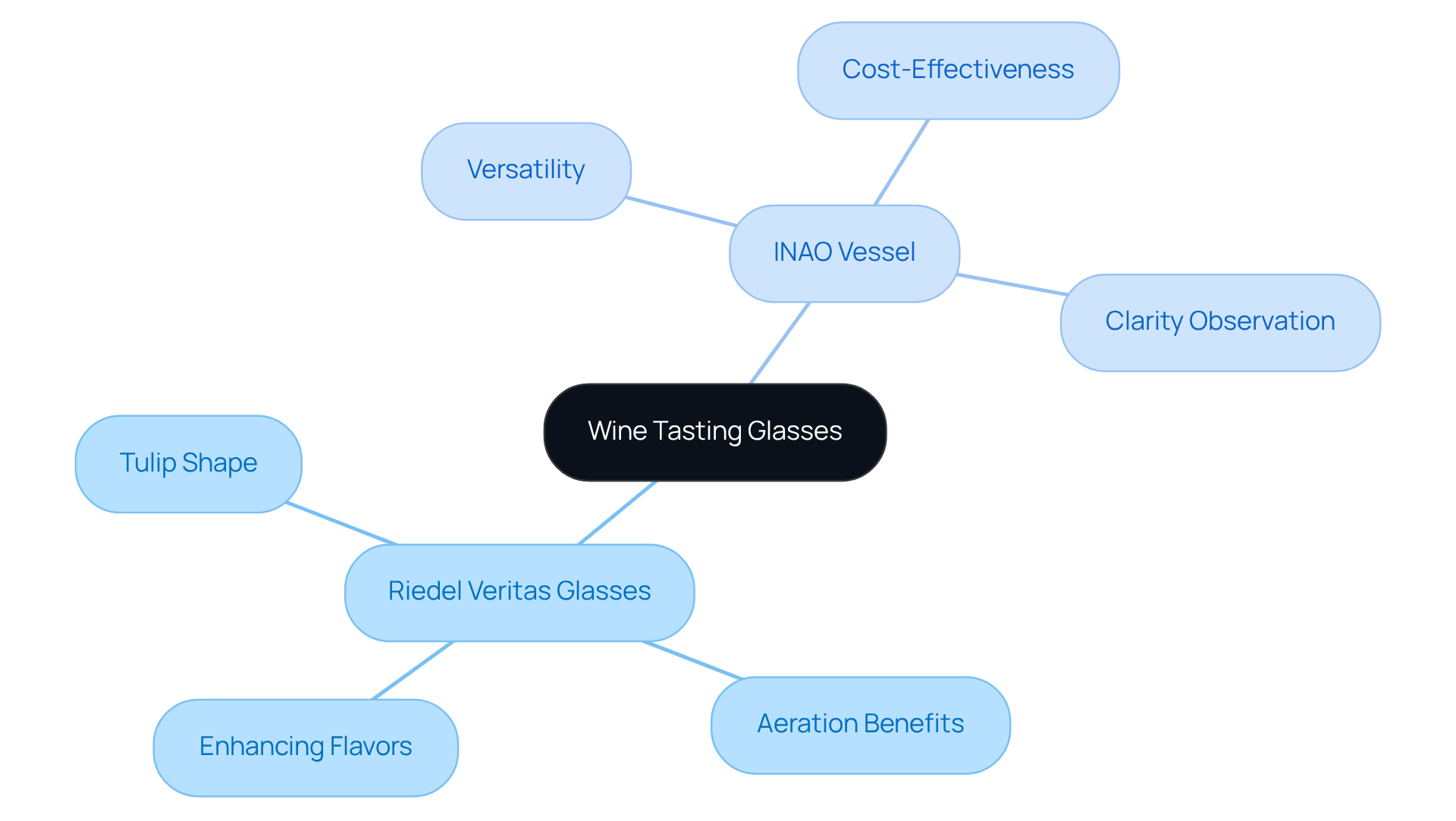
Coravin: Preserve Wine Quality with Every Pour
Coravin revolutionizes the beverage experience by allowing enthusiasts to pour a glass without removing the cork. This cutting-edge system utilizes a needle to access the liquid, simultaneously replacing the extracted volume with argon gas, effectively preventing oxidation. Consequently, beverage aficionados can enjoy their favorite bottles over extended periods, establishing Coravin as an essential tool for personal enjoyment and tasting events alike.
The impact of beverage preservation tools like Coravin on consumer purchasing behavior is profound. By enabling venues to offer a wider variety of beverages by the glass—up to 150 options—Coravin encourages consumers to explore premium selections they might not typically consider. This not only enriches the tasting experience but also boosts sales, as restaurants can for weeks or even months.
Experts in the beverage industry recognize the advantages of utilizing Coravin. For instance, Greg Lambrecht, the creator of Coravin, emphasizes that the system allows venues to significantly expand their by-the-glass offerings, ensuring that beverages remain fresh long after the initial pour. He states, "Coravin is relied upon by experts globally to serve and maintain beverages for weeks, months, and even years, enabling restaurants to showcase a broader variety by the glass." This capability not only enhances the customer experience but also fosters a deeper appreciation for exquisite beverages.
Case studies illustrate the effectiveness of Coravin in sampling events. Establishments employing Coravin systems have reported increased customer engagement and satisfaction, as patrons can taste a range of beverages without the commitment of a full bottle. This flexibility not only elevates the tasting experience but also cultivates a loyal customer base eager to return for more curated beverage experiences.
In conclusion, Coravin emerges as an indispensable wine tasting tool for both consumers and wineries, as it preserves quality with every pour and transforms the enjoyment and appreciation of beverages. The Wine Preservation Systems Market, valued at USD 752 Million in 2023 and projected to reach USD 1200 Million by 2031, highlights the growing demand for innovative solutions like Coravin, despite challenges such as the high cost of advanced preservation systems.
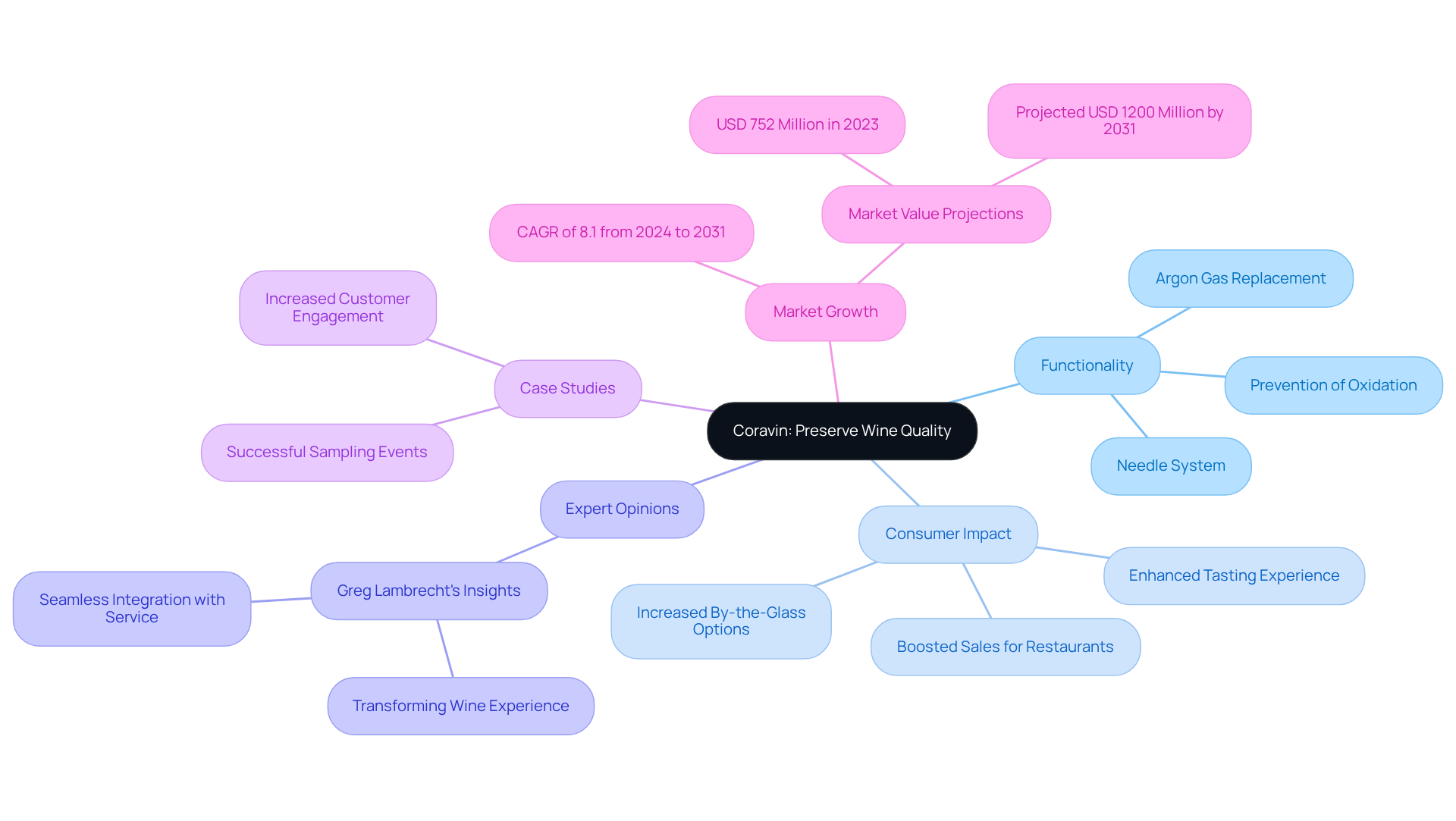
Aroma Kit: Discover the Nuances of Wine Aromas
Aroma kits are invaluable tools for anyone seeking to deepen their understanding of beverages. Typically containing vials of various scents commonly encountered in drinks, these kits empower users to refine their olfactory skills and enhance their sampling techniques. Research shows that 75 to 95 percent of taste is derived from smell, emphasizing the critical need to familiarize oneself with these aromas. By engaging with aroma kits, consumers can significantly improve their appreciation of different beverages, leading to a more fulfilling experience.
Current trends reveal a growing interest in DIY aroma kits, which can be assembled using materials from reputable beverage education platforms such as Wine Spectator and Wine Folly. This cost-effective strategy allows enthusiasts to explore a diverse array of aromas, ranging from fruity notes like pineapple and tropical fruits to earthy scents reminiscent of mushrooms and mountain air. The Sonoma County Wine Celebration serves as a compelling case study, illustrating how aroma training can elevate the beverage sampling experience. In 2025, the event underscored its commitment to supporting children's literacy initiatives, reflecting the community's dedication to social causes. Participants utilizing aroma kits reported heightened awareness of scents, which contributed to a more enjoyable and informed experience.
As the beverage industry continues to evolve, the importance of aroma training is increasingly recognized. Engaging in aroma identification exercises not only sharpens personal tasting abilities but also fosters a deeper connection with the wine itself. For wineries, integrating wine tasting tools such as aroma kits into sampling events can create memorable experiences that resonate with customers, ultimately fostering loyalty and appreciation for their products. To , wineries should encourage participants to partake in blind tastings or aroma identification challenges, further refining their tasting skills.

Universal Wine Glass: The Essential All-Rounder
Universal drinking vessels represent a crucial enhancement to any connoisseur's collection, expertly crafted to accommodate a diverse range of beverage types. Their balanced shape not only amplifies the aromas and flavors of both red and white wines but also guarantees that each sip transforms into a delightful experience. By investing in high-quality universal vessels, consumers can fully appreciate the nuances of various varietals without the inconvenience of switching between different types. Remarkably, specialists assert that universal drinking vessels are suitable for approximately 75% of beverage types, establishing them as an exceptionally versatile choice.
The design of universal beverage containers plays a significant role in shaping the tasting experience. Their ergonomic shape optimizes oxygenation and aroma diffusion, allowing the full bouquet of each beverage to flourish. This adaptability streamlines the tasting process, encouraging enthusiasts to focus on the beverage itself rather than the container, thus enhancing overall enjoyment. Chris Jenkins, general manager of Crimson Lane Vineyards, emphasizes, "It should be wide enough to aerate red varieties but not so large that it over-aerates whites or flattens sparkling options."
Experts in the field underscore the importance of selecting a container with a clean, straightforward design that seamlessly transitions between formal and casual settings. This approach not only elevates the drinking experience but also simplifies service in bustling environments, making universal beverage vessels indispensable for personal collections and hospitality contexts. As noted by Marshall Tilden III, chief revenue and education officer at Wine Enthusiast, "It’s all about striking the perfect balance between form and function."
Case studies illustrate the transformative effect of universal drinking vessels on service and tasting experiences. For instance, in upscale dining establishments, these vessels have been shown to enhance operational efficiency by reducing the need for multiple specialized sets. This consolidation not only saves time and costs but also ensures consistency in presentation and quality across all beverage offerings. One study highlighted that universal beverage containers streamline inventory and service logistics, making them a preferred choice in fine dining.
Ultimately, universal glasses act as economical wine tasting tools for enthusiasts, enabling them to relish a superior tasting experience while simplifying their glassware requirements. Their ability to adapt to various beverage styles makes them essential for anyone looking to elevate their appreciation journey.
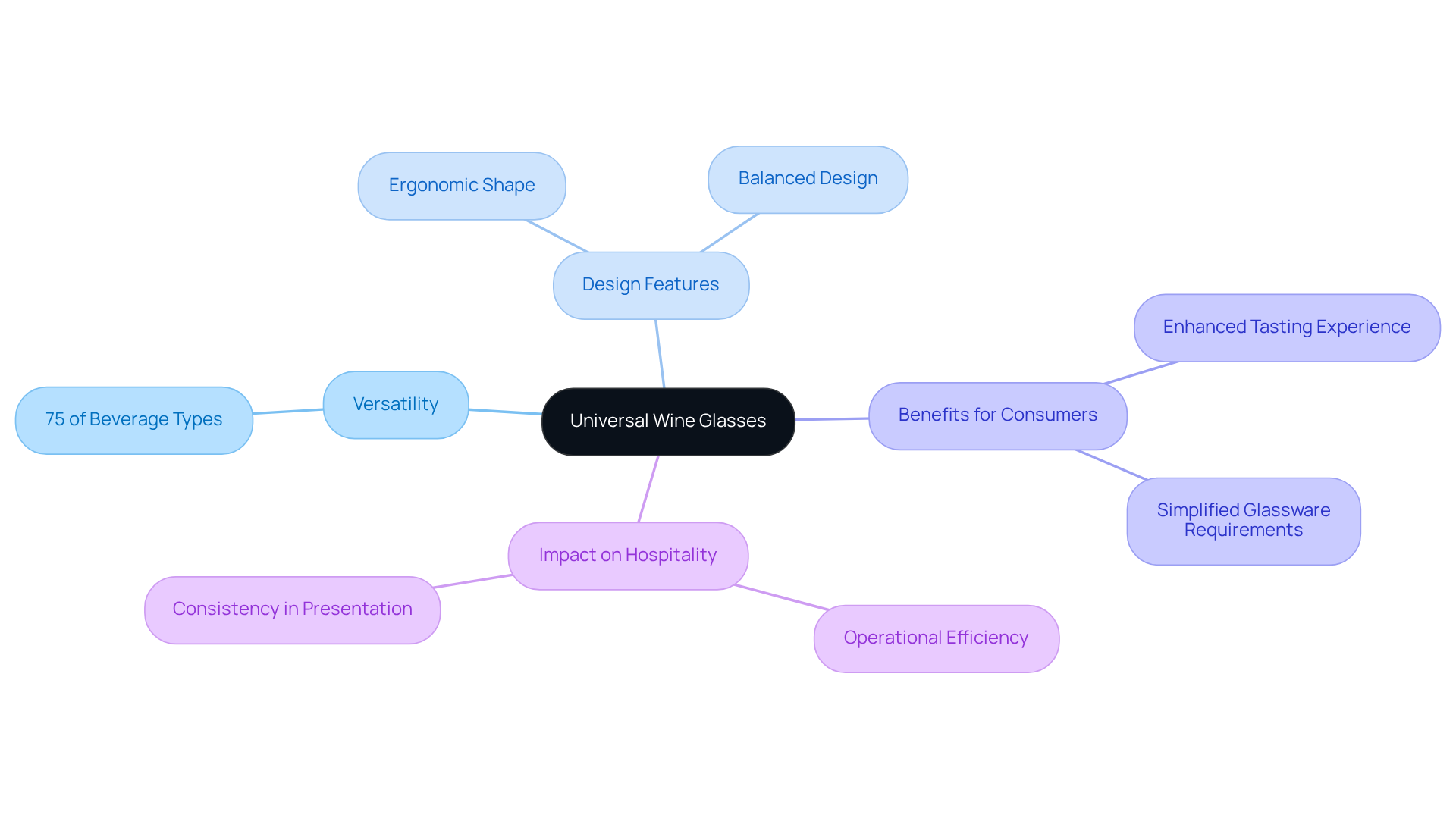
Decanter: Enhance Flavor Through Aeration
Decanting this beverage is a transformative practice that significantly enhances its flavor and aroma. By exposing the beverage to air, this process facilitates oxidation, softening tannins and releasing volatile compounds that enrich its bouquet. This is particularly beneficial for , which often require time to fully reveal their character. A carefully crafted decanter is one of the essential wine tasting tools that not only serves a practical purpose but also enhances the visual appeal of any beverage presentation, making it a fundamental element in contemporary beverage sampling events.
Current trends indicate a growing interest in beverage decanters, with sales reflecting an increased appreciation for the art of decanting. Sommeliers emphasize that the decanting process can significantly alter the tasting experience, enabling beverages to aerate and reach their full potential. For instance, young cabernet sauvignon and syrah benefit from 30 minutes to an hour of aeration, revealing deeper fruit notes and a more balanced palate. As one expert noted, "Aeration helps unlock complex flavors, making the beverage more expressive and enjoyable."
Case studies underscore the effectiveness of decanting: one study discovered that decanting young, bold reds for just half an hour can significantly enhance their flavor, while older varieties, such as aged Bordeaux, require only 20 to 30 minutes of gentle aeration to prevent fading tastes. This careful timing ensures that the beverage retains its character while benefiting from exposure to air. Furthermore, it is advisable to sample the beverage at intervals during decanting to ascertain the ideal aeration duration for each particular variety.
In summary, decanting is not merely a ritual; it is a crucial step in enhancing the wine-drinking experience, allowing for a deeper appreciation of the complexities within each bottle.
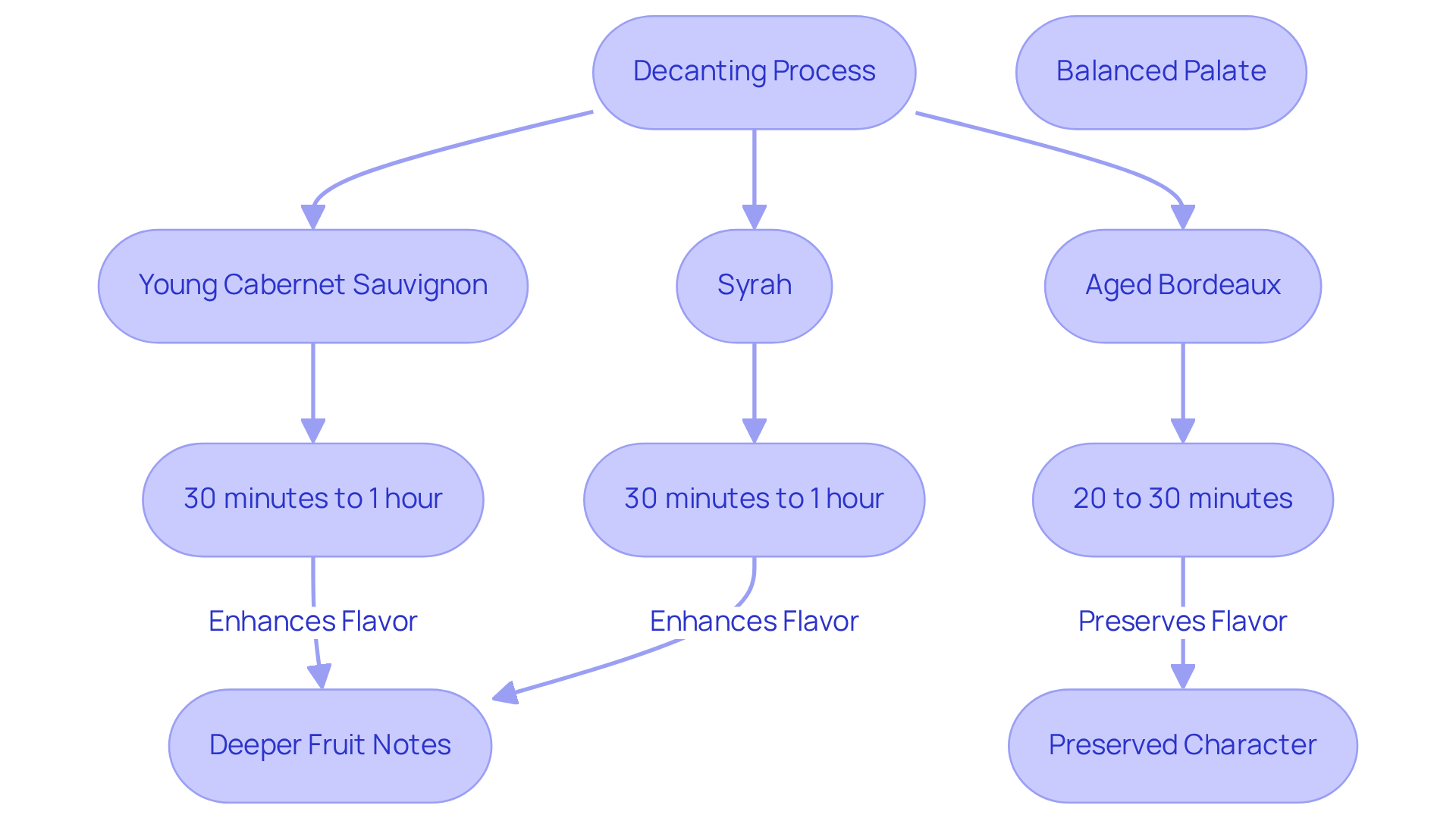
Tasting Notebook: Record Your Wine Journey
A tasting notebook is an indispensable wine tasting tool for beverage enthusiasts, serving as a personal archive of impressions, preferences, and tasting notes. By meticulously documenting their beverage journey, consumers can effectively track their evolving tastes and refine their selections over time. This practice not only amplifies the enjoyment of beverages but also empowers individuals to make informed choices when selecting future bottles.
Research underscores that writing notes by hand significantly enhances memory retention compared to typing; studies demonstrate that handwritten notes lead to superior recall and understanding.
Whether opting for a like the Moleskine Passion Journal or the Leuchtturm 1917, or leveraging a digital application, using wine tasting tools to maintain a record of tasting experiences fosters a deeper appreciation for the intricate flavors and aromas that wines offer.
Case studies illustrate that organized note-taking, which incorporates wine tasting tools along with key information such as producer, vintage, and flavor descriptors, can substantially elevate the overall experience, allowing enthusiasts to remember and compare different beverages more effectively.
Furthermore, while conventional tasting journals present certain advantages, they may also have drawbacks, such as uninspiring designs or format limitations. As the beverage industry evolves, adopting innovative documentation tools can further enhance customer engagement and loyalty.
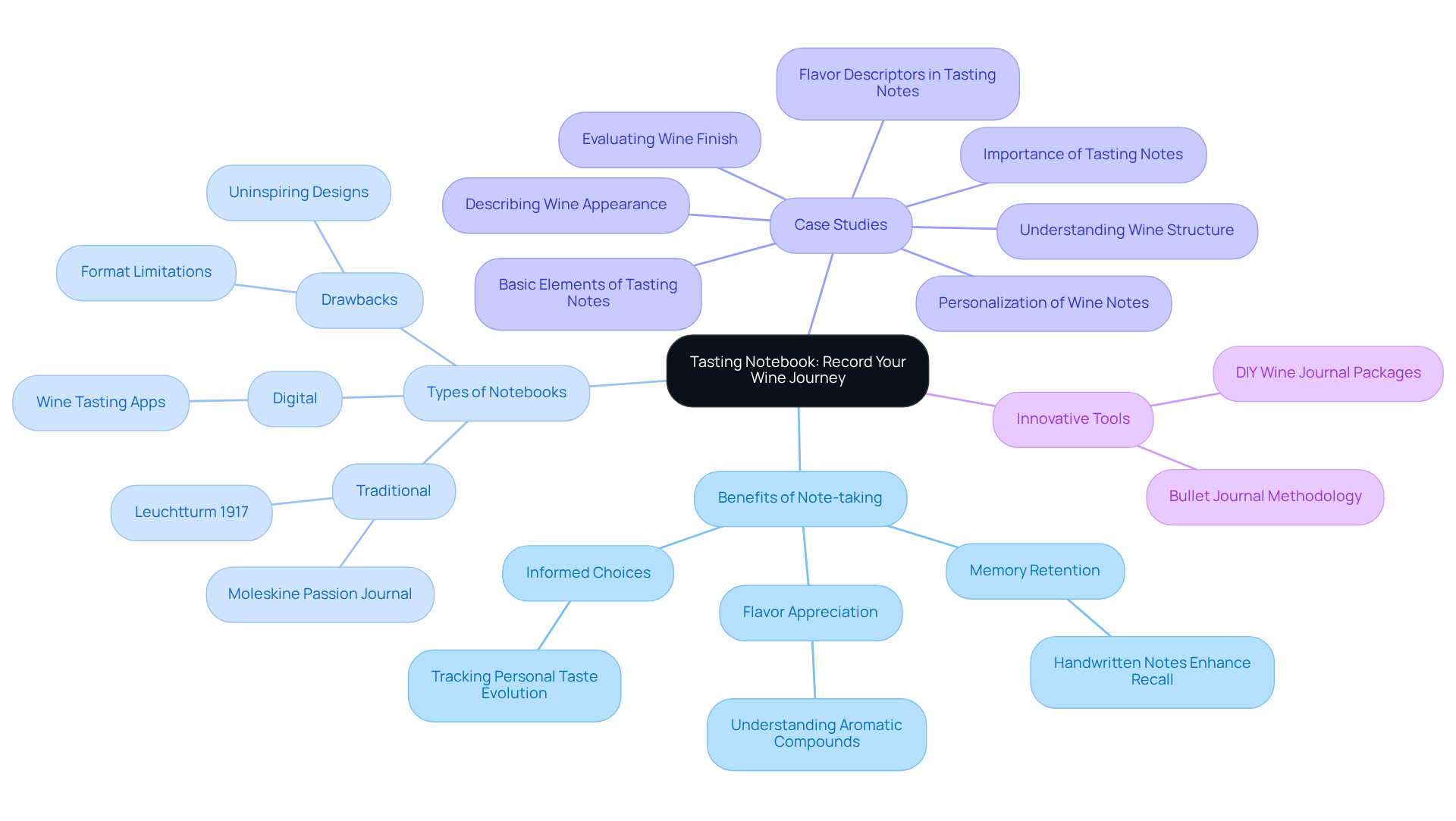
Wine Preservation Tools: Keep Your Wines Fresh
Wine preservation tools, which are a type of wine tasting tools like vacuum pumps and inert gas systems, play a crucial role in maintaining the freshness of opened bottles. These tools operate by removing air from the bottle or replacing it with a protective gas, effectively slowing down oxidation and preserving the beverage's original flavor. By employing these preservation methods, consumers can savor their favorite wines over several days or even weeks, all without compromising quality.
For anyone in the wine industry, understanding the significance of wine tasting tools is essential. The ability to prolong the life of an opened bottle not only enhances the consumer experience but also adds value to the product offered. Imagine being able to enjoy that exquisite vintage without the fear of spoilage—this is what effective wine preservation achieves.
In conclusion, investing in quality wine tasting tools is not merely a choice; it is a necessity for those who wish to uphold the integrity of their offerings. By doing so, you not only cater to the demands of your clientele but also solidify your reputation as a knowledgeable and reliable player in the market.
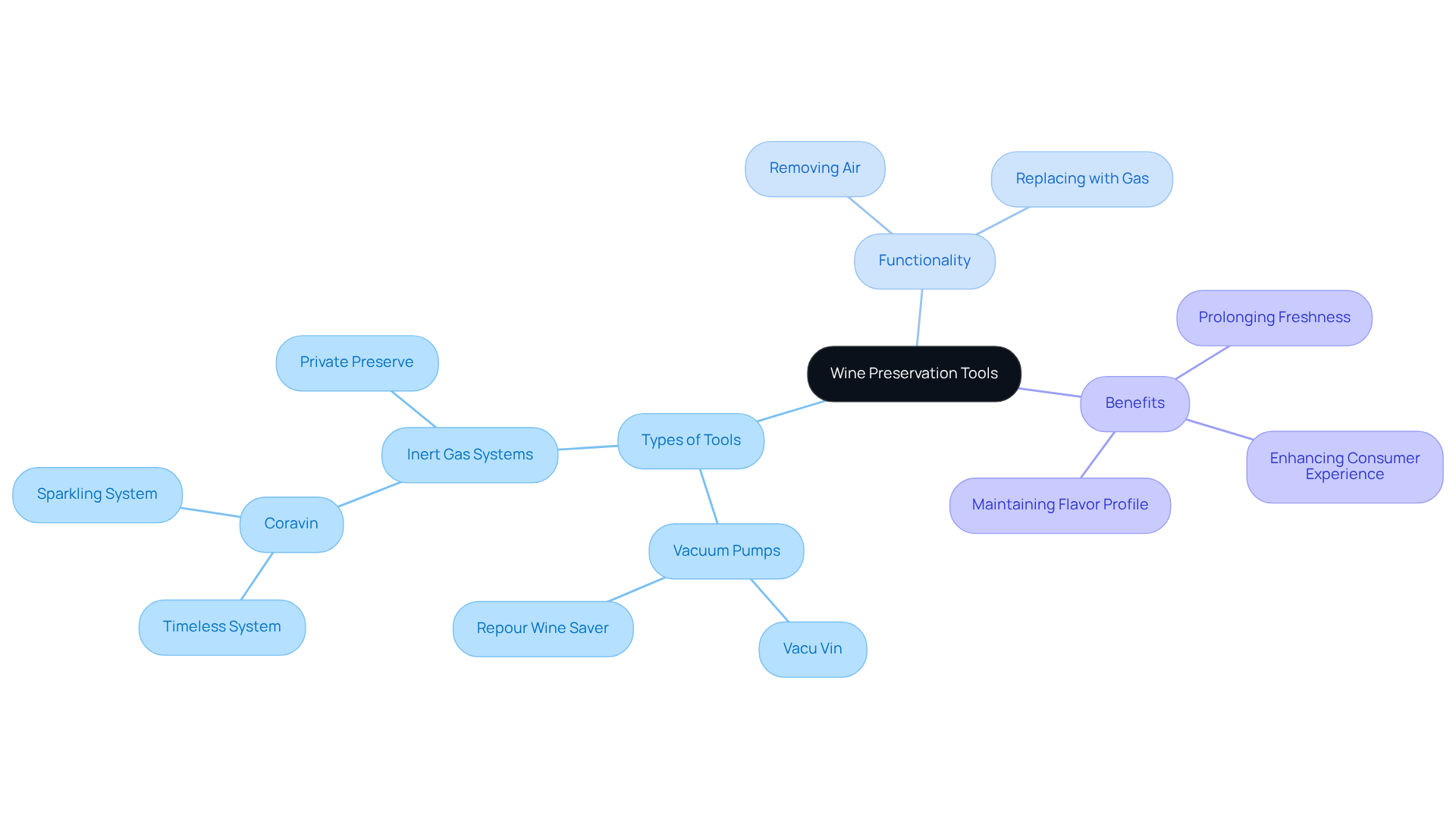
Spit Bucket: Taste Responsibly and Effectively
A spit bucket serves as an indispensable wine tasting tool for participants in beverage tastings, especially within professional settings. It enables the practice of spitting out beverages post-sampling, a critical action for preserving sobriety and ensuring that evaluations remain lucid and objective. This widely accepted practice empowers tasters to explore a broader spectrum of beverages without the impairing effects of alcohol, ultimately to accurately assess flavors and aromas.
Recent case studies, such as 'The Importance of Spitting at Wine Tastings,' underscore the beneficial impact of spit buckets on evaluation experiences. This study emphasizes that spitting is vital for maintaining clarity and avoiding intoxication, particularly when visiting multiple wineries in a single day. Numerous beverage experts assert that confidence in utilizing spit buckets significantly enhances their sampling experience, allowing for a more thorough evaluation of beverage attributes. Employing proper technique—such as positioning oneself in front of the spittoon, angling the face down when spitting, and taking measured sips—further optimizes this process.
Current trends in professional beverage sampling highlight the importance of using wine tasting tools, including spit buckets, not only for individual participants but also for cultivating a welcoming atmosphere at events. By ensuring that spittoons are accessible and well-maintained, wineries can foster a culture of responsible sampling that encourages guests to explore more varieties while remaining coherent and engaged. As one expert aptly noted, "In the grand orchestra of festival planning, spittoons and spit etiquette might seem like a minor instrument — yet they can dramatically impact the harmony of your wine event."
Best practices dictate that spittoons should be emptied and replaced regularly, ideally every 15-30 minutes during peak times, to uphold cleanliness and functionality. Additionally, positioning spittoons at a convenient height, roughly waist level, guarantees ease of use for all attendees. It is also prudent to avoid wearing white to an event due to the risk of spills. By prioritizing these practices and utilizing effective wine tasting tools, wineries can elevate the overall tasting experience, making it enjoyable and professional for everyone involved.
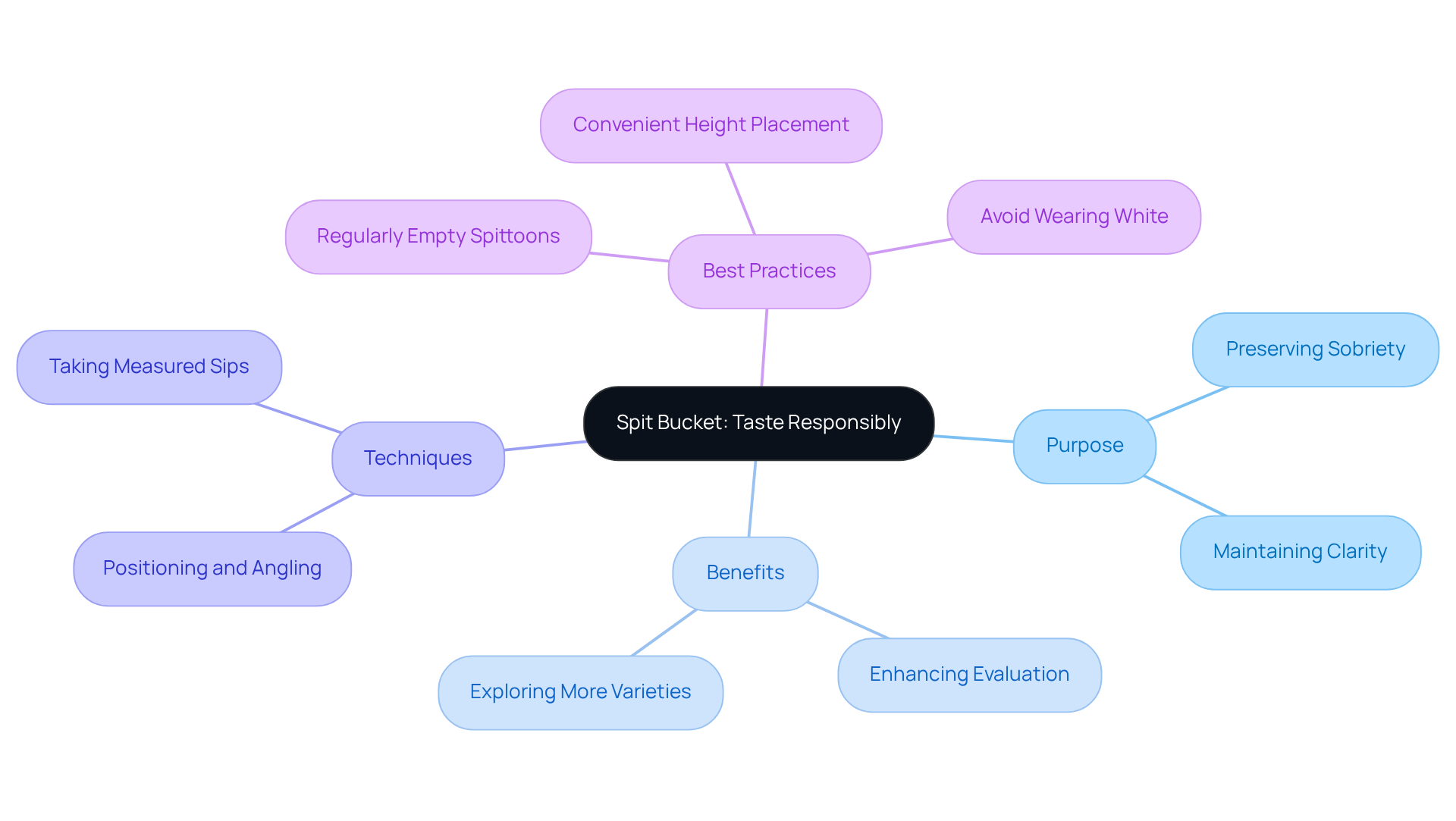
Wine Opener: Essential for Accessing Your Bottles
A dependable corkscrew is indispensable for any beverage enthusiast. Whether you prefer a classic waiter's corkscrew, a lever-style opener, or an electric model, using the right wine tasting tools transforms the task of opening bottles into a seamless experience. A quality wine opener not only enhances the enjoyment of wine but also reflects the user's appreciation for both quality and convenience.
By investing in high-quality wine tasting tools, including a reliable opener, you ensure that every bottle is easily accessible, paving the way for an exceptional tasting experience. Why settle for less when the can elevate your wine enjoyment?
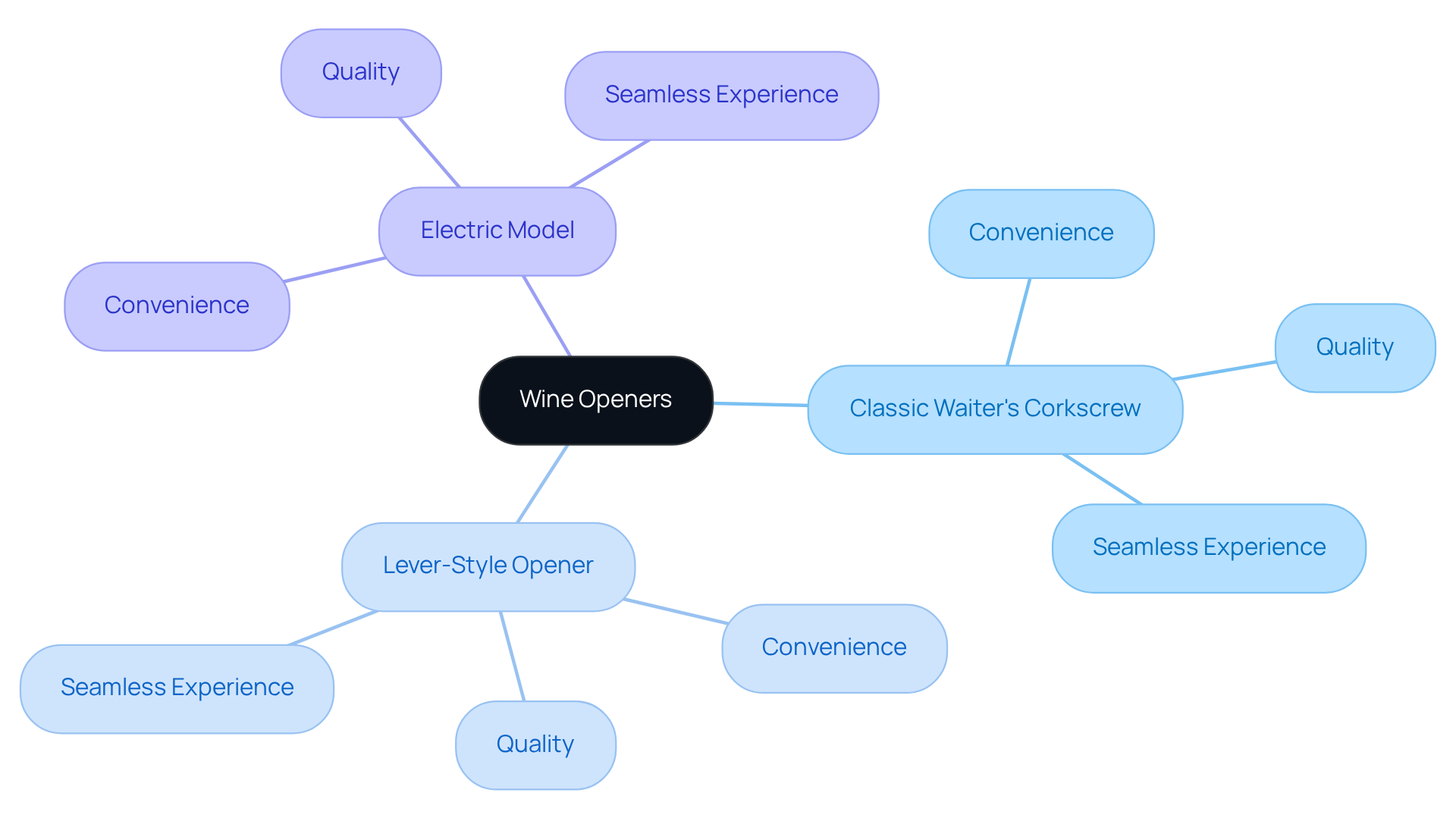
Conclusion
Investing in essential wine tasting tools is indispensable for enhancing customer experiences and cultivating deeper connections with wine enthusiasts. These tools not only facilitate a more enjoyable tasting journey but also signify a winery's commitment to quality and customer engagement. By incorporating the right equipment—from premium glassware to innovative preservation systems—wineries can craft memorable experiences that resonate with their audience.
The article highlights several key tools, such as:
- Riedel Veritas glasses
- Coravin wine preservation system
- Aroma kits
- Universal wine glasses
Each contributing uniquely to the tasting experience. The effective use of these tools can lead to increased customer satisfaction, loyalty, and ultimately, sales growth. Furthermore, practices like decanting and maintaining tasting notebooks enhance the appreciation of wines, allowing consumers to engage more deeply with their selections.
Ultimately, the significance of these wine tasting tools extends beyond mere functionality; they play a vital role in shaping the overall experience for consumers. Wineries that prioritize the use of high-quality tools and techniques not only elevate their offerings but also position themselves as leaders in a competitive market. Embracing these strategies will enrich the tasting experience and drive long-term success and customer loyalty in the evolving landscape of wine marketing.
Frequently Asked Questions
What is Enocap and what strategies do they offer for family-owned wineries?
Enocap specializes in creating customized direct-to-consumer (DTC) strategies that help family-owned wineries build meaningful connections with their customers. Their focus includes robust sales channel development, optimizing club memberships, and executing efficient demand generation techniques.
What results have Enocap's strategies achieved for their clients?
Enocap has achieved an average e-commerce sales growth of 191% for its clients, driving immediate sales while also fostering long-term customer loyalty through compelling brand narratives and personalized experiences.
What recent trends are observed in the beverage industry concerning wineries?
Approximately 70% of wineries expect sales growth exceeding 5% over the next five years, highlighting optimism in the evolving DTC landscape. A notable trend is the consumer preference for larger, consolidated purchases, with orders of four to six bottles now accounting for 25% of all shipments.
How are wineries adapting to changing consumer preferences?
Industry leaders emphasize the importance of adapting to consumer desires, such as the increasing interest in premium selections. The average price of a bottle shipped directly to consumers has risen to $52.68, indicating an opportunity for wineries to adopt premium pricing strategies.
What are the Riedel Veritas Pinot Noir/Burgundy glasses designed for?
The Riedel Veritas Pinot Noir/Burgundy glasses are crafted to enhance the enjoyment of Pinot Noir by emphasizing its delicate aromas and flavors. Their elegant tulip shape promotes optimal aeration, which is crucial for appreciating the beverage's complexities.
Why is premium glassware important for wineries?
Premium glassware enhances consumer enjoyment and signifies a winery's commitment to quality and artistry. The right vessel can significantly influence the perception of a beverage's hue, fragrances, and flavors, making it essential for tasting events.
What is the function of the Coravin system?
Coravin allows users to pour a glass of wine without removing the cork, using a needle to extract the liquid while replacing it with argon gas to prevent oxidation. This enables enthusiasts to enjoy their favorite bottles over extended periods.
How does Coravin impact consumer purchasing behavior?
Coravin allows venues to offer a wider variety of beverages by the glass—up to 150 options—encouraging consumers to explore premium selections. This capability boosts sales and enriches the tasting experience as restaurants can preserve the freshness of opened bottles for weeks or months.
What benefits do establishments experience by using Coravin?
Establishments using Coravin report increased customer engagement and satisfaction, as patrons can taste a range of beverages without committing to a full bottle. This flexibility enhances the tasting experience and helps cultivate a loyal customer base.
What is the projected growth of the Wine Preservation Systems Market?
The Wine Preservation Systems Market is valued at USD 752 Million in 2023 and is projected to reach USD 1200 Million by 2031, indicating growing demand for innovative solutions like Coravin, despite challenges such as the high cost of advanced preservation systems.




